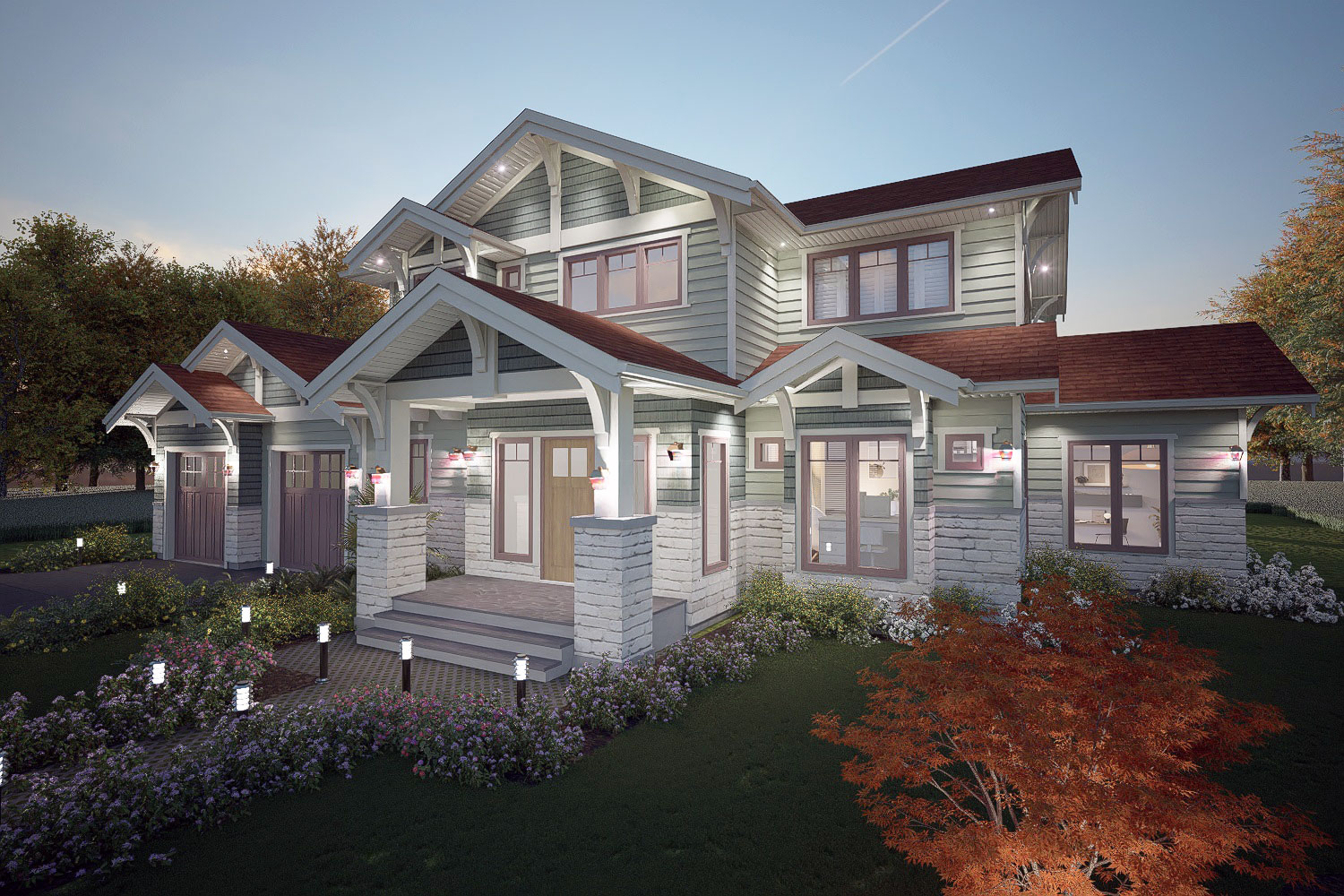
The Arts and Crafts style
In reaction to the prevailing dominance of art deco, Victorian, and heavily ornamented manmade architecture during the heyday of America's Industrial Revolution, the Craftsman style emerged as a refreshing alternative.
Rooted in the influence of the British Arts and Crafts movement, which, in turn, found inspiration in England's own Industrial Revolution, the Craftsman movement championed the significance and superior quality of hand craftsmanship.
Diverging from the intricate embellishments characteristic of its contemporary architectural styles, Craftsman style homes sought to reintroduce a more unpretentious and approachable design ethos steeped in welcoming warmth. At its core, the Craftsman movement was a tribute to the inherent beauty of natural materials and organic forms, elevating the aesthetic appeal through the skilled hands of artisan craftsmen.
This architectural approach celebrated the artistry of creating timeless designs that harmonized seamlessly with their surroundings.

Whether you're in search of the classic rendition of a Craftsman home, such as the bungalow style popularized by the Greene brothers, or the Prairie variation pioneered by the renowned architect Frank Lloyd Wright, there are distinctive features that unmistakably identify an authentic Craftsman-style house. To discern the essence of Craftsman architecture, here are key elements to observe:
1. **Thoughtfully Proportioned Homes:** Craftsman homes are characterized by their intentional design to provide a comfortable living space for a growing family without succumbing to excessive dimensions, maintaining a harmonious balance between spaciousness and intimacy.
2. **Exposed Structural Elements:** A hallmark of Craftsman architecture is the deliberate exposure of structural elements, such as beams and brackets, on the exterior. This not only adds visual intrigue to the facade but also underscores the craftsmanship integral to the style.
3. **Embrace of Natural Materials:** Craftsman homes showcase a profound affinity for natural materials. From painted wood paneling to stone foundations, these residences celebrate the innate beauty of nature, demonstrating how exquisite homes can be fashioned from organic elements.
4. **Expansive Porches:** Large and inviting front porches are quintessential to Craftsman homes, serving as communal spaces that seamlessly blend interior and exterior design. This emphasis on gathering spaces fosters a sense of community and connection.
5. **Bay or Picture Windows:** Craftsman architecture often incorporates spacious bay or picture windows, particularly on the front facade. These windows not only evoke a sense of natural grandeur but also allow the beauty of the surroundings to permeate the interior, complementing the natural materials prevalent in the design.
6. **Artisanal Detailing:** While Craftsman homes diverge from the ornate intricacies of Victorian architecture, they are not devoid of embellishments. The facades of Craftsman homes often feature meticulous details and artisan-crafted touches, showcasing a commitment to craftsmanship and aesthetic refinement.

The Arts and Crafts movement gained traction in North America due to a rejection of mass production, a desire for handmade goods, and a focus on individual craftsmanship, fostering a sense of authenticity and connection to nature.
Arts and Crafts homes appeal for their harmony of craftsmanship, natural materials, and functional design, fostering a warm, welcoming atmosphere.
Joe Rommel
Having designed houses on the North Shore of Vancouver, BC for the last 30 years, Joe is a registered and certified building designer with the Applied Science Technologists and Technicians of BC (ASTTBC).
ReplyLeave a Reply